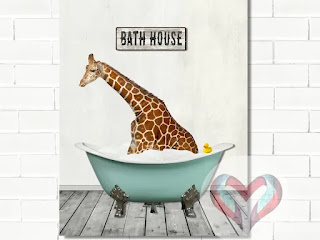Types of frames to decorate a beautiful design
The posters and custom designs that we do in Meliav Digital, you can decorate a wall without a frame and with a frame. Both are equally beautiful but in many cases our customers decide to choose a frame.
Let's show you the types of frames there are;
Interchangeable frame:
This picture frame makes changing pictures a breeze because it has an easy-to-remove back panel. The picture frame is mainly available in standard sizes and comes in countless designs and materials.
Molding frame:
This picture frame is cut and fitted to the exact dimensions of artwork. Mouldings are the four profiles that make up the picture frame.
Distance frame:
A greater depth of performance creates a space between the back wall and the glass - the ideal showcase for three-dimensional objects.
Style frames:
This is the name given to picture frames that are modeled on antique examples - usually baroque picture frames. They are cast, have elaborately decorated profiles and a noble paint.
Magnetic frame:
In this picture frame, all the individual parts - frame, glass, passe-partout, picture and back panel - are held together by magnets. This makes it easier to replace pictures and prevents broken fingernails.
Collage frame:
A collage frame can hold several pictures at once. The picture frame combines different motifs and makes them into a new whole - ideal for portraits of friends and family.
Frameless picture holder:
This picture frame has no frame. Instead, small metal clamps hold the glass, mount, picture and back panel together. Note: be sure to sand the edges of the glass.
Digital picture frame:
A digital picture frame is like a small monitor that shows digital photos. Depending on the configuration, it changes the motif independently.
Stretcher frame:
A stretcher frame is not a classic picture frame. It consists of four strips that are joined together to form a basic frame. It is then covered with canvas fabric.
Shadow gap frame:
The shadow gap frame can be called a picture frame for canvases. It has an L-profile and does not have its own back wall. The back of the picture frame is screwed to the stretcher of the canvas. This prevents the wood of the canvas from warping. A joint is left between the canvas and the frame. Thus, the painted side parts of the canvas can still be seen.
Whether it's a large work of art or a small snapshot in a simple wooden picture frame - especially pretty, unusual or cherished picture frames deserve a place of honor. This is what they get when an entire wall belongs to them alone. In the classic Petersburg hanging, numerous picture frames placed close together cover an entire wall. In addition, there are edge and row hangings, symmetry or grid hangings of picture frames.
And if you don't want to drill too often, or are a more flexible type of decorator?
Picture rails: Notoriously changeable and decoration-loving home enthusiasts arrange their picture frames on a picture rail. These have a U-profile so that the picture frames do not slip down and allow ever new arrangements without additional holes in the wall. Another advantage: In addition to picture frames, picture rails are deep enough for small accessories.
Gallery rails:
Or do it like the professionals in museums and galleries. They use gallery rails to hang picture frames over and over again. The rails are mounted in the bend between the wall and ceiling. Chains or ropes are threaded into them and can be moved horizontally. The picture frames can be hung on them at any height and even one above the other. This also makes it flexible and saves holes in the wall.
Which picture frame for which motif?
Old pictures in a picture frame typical of the time, modern motifs in a correspondingly modern picture frame? Forget it - nowadays what pleases is allowed. With contemporary art, the contrast with a classic picture frame can be very exciting. Playful motifs tolerate a squiggly picture frame. If the picture has a businesslike structure, a simple picture frame is recommended if you want to emphasize the straightforwardness. This is because a simply designed picture frame steps back and does not distract from the artwork. If you choose an elaborate picture frame in contrast, the focus is not necessarily on the picture itself, but on the overall work of art picture plus frame.
The only rule: the more valuable the picture, the more valuable the picture frame should be. For example, a custom-made.
When does a picture frame need a passe-partout?
Whether a picture frame is equipped with a passe-partout - a frame made of cardboard - is a matter of taste. Nevertheless, a passe-partout in the picture frame makes sense especially for graphics, drawings or works on paper. It serves to protect the art, which should not come into contact with the glass in the picture frame. In addition, a passepartout directs the viewer's gaze and also sets the scene for small motifs in the picture frame. The motif, picture frame and passepartout should harmonize in color.









